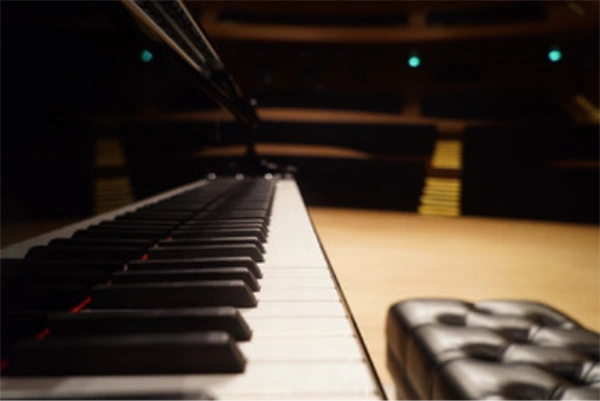
The alchemy of music often starts before a note is even played. Musicians understand that mastery isn’t just about practice and passion that fuels continued growth — it’s also about posture, precision and presence.
Pianists depend more than most on ergonomics. The piano, unlike any other instrument, permits mobility and changes of body position, requiring the player to remain still and centered. You spend hours practicing/composing/performing in a fixed seating position. That is why a pianist’s choice of bench — though it may seem a trivial accessory — is not.
It’s an instrument in itself.
One might imagine a flat surface will do. But the seasoned players who play and teach know better. Poor posture while playing causes tension in the back, neck, and wrists. This, over time, leads to fatigue, injury, and technical constraints.
Introducing the adjustable piano bench — the basic instrument for physical comfort and musical performance.
Keep reading to learn why an adjustable piano bench is a vital addition.
1. Precision Begins with the Perfect Height
One secret to successful piano technique is a properly aligned body. The torso length, arm’s reach, and the shape of the hand placed upon the keyboard matter.
Besides, traditional benches are often at a fixed height. This discoordination causes the body to compensate, frequently resulting in poor technique. This problem can be addressed by an adjustable artist piano bench, which allows the musician to adjust the seat to the perfect ergonomic height.
The forearms should be aligned horizontally to the keyboard and should not have to extend away to reach the instrument. Moreover, the shoulders must be resting, the wrists floating, and the fingers free to express.
Young pupils particularly like this flexibility as their bodies grow and develop. There’s no reaching or leaning toward the keys; they’re always a centering force—a sound habit for developing the physical technique required to play correctly.

2. Practicing Long Necessitates Comfort
Piano practice is not just a 30-minute session.
For students studying for an exam or professionals practicing a complicated sequence, it’s hours on end. Without the proper bench, this time can be uncomfortable and distract you from your music to muscle pain. With all the adjustable benches, the height also differs for better comfort, and that often includes memory foam or padded seating.
Advanced desks also feature dual adjustment knobs and silent hydraulic lifts that minimize noise and make height adjustment a snap. On the other hand, premium comfort piling reduces pressure on the tailbone and hips for hours of concentration without aches. These benches relieve physical stress and pave the way for productive jam sessions.
3. Shared Instruments Demand Versatile Seating
Various pianists play in numerous music schools, studios, and venues. Exchanging fixed benches between players is time-wasting and disruptive. However, an adjustable bench suits all performers.
Teachers can easily adjust the heights among students. Besides, concert pianists have the luxury of changing their setup moments before a recital. This versatility brings a professional, vintage appeal to any setting. It also reflects a respect for the pianist’s needs, allowing them to focus solely on their art without unnecessary distraction or discomfort.
4. Enhances Posture, Prevents Injury
It’s easy to forget about posture when discussing technique and interpretation. Yet poor alignment affects everything, and not just sound or physical health.
A low bench means that you will have to hold your wrists high, creating tension and stress in the upper body. Placing them too high will compress your shoulders and inhibit finger control. An adjustable piano bench eliminates these issues while aligning the spine and maintaining the hands in a neutral position.
Moreover, it becomes a tool for preventing injuries and making prevention an integral part of the process, especially for professionals and daily players who depend on their physical health to deliver performances and lessons.
5. Stability and Musical Flow-Support Design

Aside from height and adjustability, the best adjustable benches usually feature better construction. Made of solid hardwood frames, precision mechanisms, and an anti-wobble design, this bench will stay where you put it. Nothing feels more distracting to a pianist than a creaking, moving seat in the middle of an emotionally-charged passage.
A lot of models are also designed with visual appeal in mind—black satin or tufted top or pianist-inspired design that complements the piano. This combination of practicality and artistic design makes any pianist feel confident playing on a stage or in a studio.
6. An Investment Instrument That Grows Forever With a Pianist
An adjustable artist bench is a long-term investment, unlike a static one that quickly outgrows or breaks down. It applies to various needs — whether beginner to professional, child to adult. Its sturdy build and classic sound make it the workhorse for years of musical evolution.
Instead of having to replace equipment every few years, pianists with adjustable benches find consistency, comfort and reliability for decades. It’s more than furniture — it’s an element of their musical identity.
7. Great for Jam Sessions and Duet Playing
Standard benches come up short in duo performances or teacher-student sessions. Adjustable benches, particularly duet-style models, can accommodate two players with different-height settings. This guarantees that neither pianist has to compromise, even when playing a four-hand piece of the most intricate nature.
Conclusion
The tie between pianist and piano is profound, but it is molded by what is beneath them. An adjustable piano bench is not a luxury; it is a necessity for pianists serious about their craft, health, and well-being.
Whether a student, touring artist, or weekend hobbyist, you deserve a bench that makes you want to play and keeps you happy after you play.
In music, every detail matters.
And here’s one you’ll notice every time you play.

